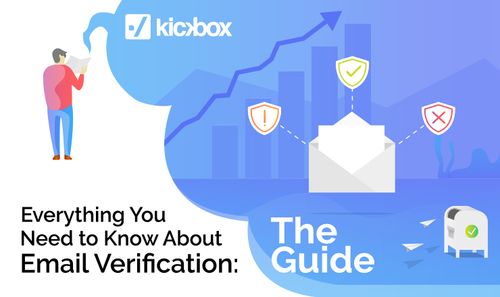In our digitized world, email communication reigns supreme. Whether you're a business professional, marketer, or an individual navigating the online landscape, email is an integral part of your daily life. However, with great power comes great responsibility, especially when it comes to the accuracy and legitimacy of email addresses. Enter the realm of email validation, a process that has become indispensable for ensuring data quality, enhancing security, and optimizing communication. As an expert in the field, I'm here to provide you with an in-depth exploration of email validation, from its significance to methodologies and best practices, answering common questions along the way.
Understanding the Significance of Email Validation
Email validation is not just a fancy term; it's a critical component of modern communication and data management. Here's why it matters:
Data Accuracy: Email validation ensures that your contact database is free from inaccuracies, typos, and obsolete addresses, preserving data integrity.
Deliverability: Valid email addresses guarantee that your messages reach their intended recipients, maximizing the effectiveness of your communications.
Spam Prevention: By identifying and removing invalid or disposable email addresses, you can mitigate spam and maintain a clean inbox.
Security: Email validation helps safeguard your organization from phishing attacks, fraud, and other cyber threats by verifying the authenticity of email addresses.
Methods of Email Validation
Email validation employs a variety of techniques and tools to ascertain the validity of an email address. These methods work harmoniously to ensure comprehensive validation:
Syntax Verification: This initial step checks whether the email address adheres to the correct format (e.g., "[email protected]") and eliminates obvious syntax errors.
Domain Validation: The system verifies the domain part of the email address (e.g., "domain.com") to ensure it exists and is configured to receive emails.
SMTP Verification: Email validation services use the Simple Mail Transfer Protocol (SMTP) to connect to the recipient's email server and verify if the address is deliverable. A positive response indicates a valid address.
Disposable Email Detection: Some services identify disposable or temporary email addresses (e.g., those ending in "@example.com") that are often used for fraudulent purposes.
Role-Based Address Identification: Role-based email addresses (e.g., "[email protected]") are detected and flagged as they may signify general inboxes rather than individual contacts.
DNS Record Examination: By inspecting the Domain Name System (DNS) records associated with the email address's domain, the system can further validate its legitimacy.
Unlocking the Benefits of Email Validation
The advantages of implementing email validation in your data management and communication strategies are profound:
Data Quality: Say goodbye to inaccuracies and ensure your records are a reliable source of information.
Cost Efficiency: Eliminate the expenses associated with undeliverable emails and wasted marketing efforts.
Enhanced Security: Protect your organization from fraudulent activities, phishing, and identity theft by verifying sender legitimacy.
Effective Communication: Ensure your messages reach the right recipients, boosting the efficiency of your email campaigns.
Compliance: In certain industries, email validation is crucial to adhere to legal and regulatory requirements.
Frequently Asked Questions About Email Validation
Let's address some of the most common questions related to email validation to provide you with a comprehensive understanding of this vital process:
1. Can email validation detect all types of fraudulent email addresses?
While email validation is highly effective, some sophisticated fraudulent addresses may still evade detection.
2. How often should I perform email validation on my contact lists?
Regular validation, such as quarterly or before major email campaigns, is recommended to ensure data accuracy.
3. Are there tools and services available for email validation?
Numerous online services and software solutions offer email validation tools to streamline the process.
4. What are the best practices for email validation to ensure accuracy and security?
Best practices include using reputable email validation services, regularly updating contact lists, and implementing email authentication protocols like SPF, DKIM, and DMARC.
Conclusion
Email validation is the cornerstone of modern data accuracy and communication. By understanding its significance, methodologies, and best practices, you can wield this powerful tool with confidence, ensuring that your email addresses are not just valid but also invaluable assets in your digital journey.
Embrace email validation as a fundamental practice in your data management strategy, and watch as your communication becomes more effective, secure, and reliable than ever before in the digital age.



